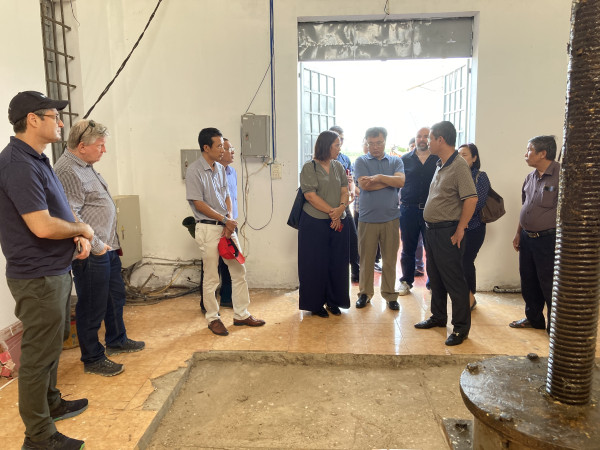Dam safety project empowers and protects Viet Nam communities

Last week phase 3 of the Viet Nam-New Zealand Dam Safety Project was launched. The project is building capability and resilience within Vietnamese communities to manage the risk of dam failure.
Viet Nam faces growing challenges from climate change, including the risk of flooding. Home to more than 7,000 dams, downstream communities are at significant risk. Supported by $7.5 million funding under the MFAT New Zealand Aid Programme, phase 3 expands the project to five additional river basins including five large dams and 150 medium dams.
Nine major dams and more than 400 medium dams will be included in the project over its lifetime, with the aim of improved safety for all dams with increased local expertise in risk management.
The project team from GNS Science, Damwatch Engineering and local partner Thuyloi University is working with the Viet Nam Government, dam managers and downstream communities to develop dam safety solutions that can be delivered down to the local level.
This includes the:
- assessment of flood risks and upstream geohazards such as large landslides and earthquakes,
- dam structural integrity,
- flood consequence modelling (e.g., casualties, building damage) and
- preparedness of downstream communities to respond if a dam fails (e.g., early warning systems and evacuation plans).
Phase 3 focuses on transferring best practice disaster risk management at the local level to enable communities to develop response planning appropriate to their needs. This includes integrating climate change impacts and social inclusion in local dam safety practices.

Damwatch Managing Director and Project Director Peter Amos said the project provides an end-to-end disaster risk management method for infrastructure impacting river basins in a country that is one of the most vulnerable to extreme weather and climate change impacts in the world.
“We have a disaster risk management process built and tested for Viet Nam over a number of years,” Project Director Mr Amos said.
We are delighted to see the strong enthusiasm for phase 3 from the provinces wanting to build their capacity for dam safety and resilience to climate change.
"We look forward to working closely with our partners to provide improvements in disaster risk management right down to community level.”
GNS Senior Disaster Risk Management Specialist and Project Leader Nicolas Pondard said planning and intervention underpinned by science and local knowledge can protect many lives from potentially destructive flood waters should a dam fail.
This project is an example of how the tools and methods we develop to arm and prepare ourselves for natural disasters in Aotearoa, can empower vulnerable communities overseas to identify, manage and mitigate similar hazards threatening their lives and livelihoods.
Phase 3 launch activities
New Zealand Ambassador to Vietnam Hon Tredene Dobson and the Viet Nam Vice Minister for Agriculture and Rural Development (MARD) Nguyen Hoang Hiep were joined by project partner representatives to celebrate the launch of phase 3 on Tuesday 25 July at a meeting in Hanoi.
In the days leading up to the launch, Ambassador Dobson and the New Zealand and Vietnamese project partners met with Vice Chairwoman of Dak Lak Provincial People’s Committee and MARD officials for a technical workshop before travelling to the Ea Sup dam in Dak Lak province to see first-hand one of the dam structures and the downstream communities included in phase 3.
-
Project partner representatives
Project partner representatives accompanying the phase 3 launch visit include:
- Damwatch: Managing Director and Project Director Peter Amos and Project Manager Tony Harker
- GNS Science: Senior Disaster Risk Management Specialist and Project Leader Dr Nicolas Pondard and Senior Risk Engineer Dr Sheng-Lin Lin
- Thuy Loi University of Viet Nam: Project Director Associate Prof Nguyen Canh Thai and Project Manager Dr Pham Hong Nga
For more information visit our project page
ENDS
GNS Media Team
P: 021 574 541
E: media@gns.cri.nz
Damwatch Engineering
P: +64 4 381 1300
E: info@damwatch.co.nz